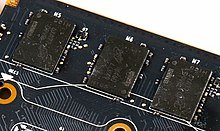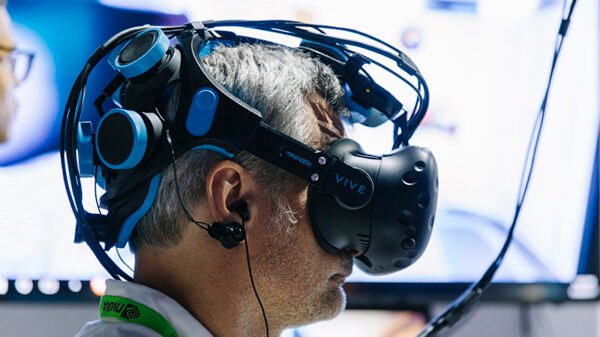This specialized form of RAM plays a pivotal role in rendering the stunning graphics encountered in video games, movies, and professional applications. But what exactly is VRAM, and how does it differ from its close relative, RAM?
The origins of Video Random Access Memory can be traced back to the early days of computer graphics, a time when the field was still in its infancy. In the late 1970s and early 1980s, computer graphics found primary use in research and development, with few applications in the consumer space. During this period, graphics processing was accomplished using mainframe computers or special-purpose hardware like vector graphics terminals.
As personal computers gained popularity in the 1980s, graphics processing began to shift towards PCs. However, the limited memory and processing power of PCs at the time posed a significant challenge for graphics processing. To address these limitations, manufacturers developed specialized graphics boards that could be installed in PCs to offload graphics processing from the CPU. These early graphics boards used standard RAM for storing graphics data but encountered limitations due to the slow access times and low bandwidth of traditional RAM.
To overcome these constraints, the first dedicated Video Random Access Memory chips were introduced in the mid-1980s. These chips were purposefully designed for fast random access patterns, which are typical in graphics rendering, boasting faster read and write speeds than traditional RAM. The introduction of Video Random Access Memory marked a significant improvement in graphics quality, enabling graphics boards to store larger textures, colors, and 3D models.
Over the years, Video Random Access Memory continued to evolve and improve. Innovations like GDDR (Graphics Double Data Rate) and HBM (High Bandwidth Memory) brought about even higher transfer rates and lower power consumption. Today, VRAM stands as an essential component of modern graphics processing, utilized in everything from gaming PCs to professional workstations and data centers.
Despite its significance, VRAM remains largely inconspicuous to most users. Few individuals outside the computer hardware industry are acquainted with the intricacies of Video Random Access Memory technology, yet it plays a critical role in delivering the stunning visuals that enrich our daily experiences.
Understanding VRAM: The Graphics Powerhouse
VRAM: Unlocking the Graphics Potential (Image credit)
What Is VRAM?
VRAM, short for Video Random Access Memory, is a specialized type of RAM that serves as the storage for image data required by a computer display. Its sole purpose is to handle the graphical demands of applications, such as video games and video editing software. Integrated directly into the graphics card, it acts as a high-speed buffer that facilitates communication between the GPU and the display.
While VRAM plays a vital role in various tasks, it is especially crucial for gaming. Video games often demand substantial VRAM to store textures, models, and other graphical data. A graphics card with inadequate VRAM might need to transfer some of this data to system RAM, which can significantly impact performance.
The amount of VRAM you require depends on the types of games and applications you use. For most gamers, starting with 8GB of VRAM is a sound choice. However, those engaging in demanding games at high resolutions or using multiple monitors may require more VRAM.
VRAM operates based on the following principle:
The GPU sends data to the VRAM, which stores it in a buffer.
The GPU subsequently accesses the data in the VRAM buffer to render images and videos.
Finally, the rendered images and videos are sent to the display.
This process occurs rapidly, multiple times per second, ensuring a seamless and smooth visual experience.
VRAM vs. RAM: Key Differences
While both VRAM and RAM are types of random-access memory (RAM), they serve distinct purposes and exhibit different characteristics.
RAM is a general-purpose memory employed by the CPU to store data and programs currently in use. It is accessed frequently by the CPU, necessitating high speed.
On the other hand, Video Random Access Memory is tailored for graphics processing. It stores textures, models, and other graphical data required by the GPU to render images and videos. VRAM needs to be fast but does not require the versatility of RAM.
Here’s a summary of the key distinctions between VRAM and RAM:
Characteristic VRAM RAM
Purpose Graphics processing General-purpose memory
Access speed Very fast Very fast
Capacity Typically lower than RAM Typically higher than VRAM
Cost More expensive than RAM Less expensive than VRAM
Additionally, Video Random Access Memory is typically dual-ported, while RAM is single-ported. This means that VRAM can be read from and written to simultaneously, whereas RAM can handle either read or write operations at a given time. This dual-port capability makes VRAM ideal for graphics processing, where the GPU must quickly access and process substantial data.
Moreover, VRAM is typically located on the graphics card, while RAM is situated on the motherboard. The proximity of VRAM to the GPU is crucial to enable rapid access.
VRAM’s Significance in Professional Workloads
VRAM: A Professional Workhorse (Image credit)
VRAM (Video Random Access Memory) assumes significance in professional workloads due to its ability to enable the GPU to swiftly store and access substantial amounts of data. This is essential for tasks like 3D rendering, video editing, and scientific computing.
In 3D rendering, for example, VRAM is indispensable for rendering 3D scenes used in movies, video games, and architectural design. The GPU must store and access textures, models, and other graphical data efficiently.
Video editing is another professional workload that benefits from ample Video Random Access Memory. During video editing, the GPU needs to store and access video frames and any added effects. Insufficient VRAM may necessitate offloading some of this data to system RAM, leading to stuttering or freezing during playback.
Scientific computing relies on VRAM as well. Numerous scientific applications employ the GPU for intricate calculations, often requiring storage and swift access to large data sets. A shortage of VRAM can hinder performance, potentially leading to errors.
Here are specific examples of how Video Random Access Memory is employed in professional workloads:
3D Rendering: Vital for rendering 3D scenes in movies, video games, and architectural design.
Video Editing: Utilized to store and access video frames and added effects.
Scientific Computing: Employed for complex calculations, used in climate modeling and drug discovery.
Image Processing: Stores and accesses images, along with applied filters and effects.
Machine Learning: Used for training and executing machine learning models, applied in tasks such as image recognition and natural language processing.
The amount of VRAM needed for professional workloads varies based on the specific applications and project requirements.
Is More VRAM Always Better?
While having more VRAM can be beneficial for certain professional tasks, it is not a case of more being better in all scenarios. For instance, if you work with large 3D models or high-resolution videos, additional Video Random Access Memory can enhance performance by allowing the GPU to store and access more data without offloading it to system RAM.
Nonetheless, there is a threshold beyond which more Video Random Access




































